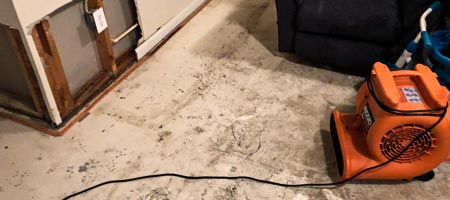Mold may not seem the most exciting topic, but first impressions can be deceiving. Believe it or not, mold has a secret life full of surprises! Do you know that there are more than 100,000 different types of mold in the world? That's right - each one looks a bit different and has its unique characteristics. It can range from the bright pinkish-purple powdery mold found in bathrooms and kitchens to the furry gray stuff that grows on meat, cheese, and other food left out too long.
In this blog post, we'll talk about how mold grows, how it works its magic, and why it's important to get rid of it ASAP. Let's start with a closer look at mold and how it survives.

Mold is a fungus that grows in warm, wet, and humid places. It reproduces by releasing tiny spores into the air, settling on damp surfaces like wood, paper, or fabric.
There are three main appearances of mold you might commonly encounter indoors: black mold, green mold, and white mold. All three can cause health concerns if left untreated.
Because of this, inspect your home for mold regularly and get professional mold testing & mold detection services if necessary.
That's why it's essential to identify the causes of mold and take steps to reduce mold-growing conditions in your location. It is the only way to keep mold from coming back, again and again.
Yes, mold toxicity is a real thing. Some mold species produce toxins known as mycotoxins that can be hazardous to humans and animals if inhaled or ingested.
The most common type of mold poisoning occurs when mold spores are released into the air and breathed in, causing hypersensitivity allergic reactions like sneezing, coughing, runny nose, or watery eyes. In extreme cases, toxic mold can lead to serious health problems.
Mold exposure may have serious health effects on your body; mold effects on body can vary depending on the type of mold and how long you are exposed to it.
Common toxicity symptoms of mold include fatigue, headaches, coughing, wheezing, skin irritation or rashes, sneezing, and sinus congestion. Inhaling mold spores for a prolonged time can lead to so much terrible mold illnesses, such as mold infection on skin or asthma. So, mold sickness should never be taken lightly.
If you've noticed an odd musty mold smell in the house, or if you see visible signs of mold growth, such as mold spots like fuzzy patches or discoloration on walls and ceilings, it's likely mold signs showing that you have a mold problem. It's essential to act quickly before the mold spreads further. You need also test the air in your home for mold spores. If you find a higher-than-normal concentration of mold spores, it's time to take action.
If you suspect mold, but can't see it, then the best thing to do is call UCM Carpet Cleaning Centreville for a professional mold inspection. We will send out a certified inspector who can test the air and surfaces in your home for mold spores. The inspector can also provide you with a detailed report outlining their findings and recommendations for mold removal.
Once the mold is identified, it's essential to take immediate action for mold removal. Do this by hiring professional mold remediation services with experience in dealing with the situation. A professional mold expert can safely and effectively remove the mold and provide advice on how to prevent it from returning.
Mold can be a severe health hazard, and taking steps to prevent or remove it from your home is essential. UCM Carpet Cleaning Centreville is the perfect solution for mold problems - the team of mold specialists is experienced in identifying, testing, and removing mold from homes. Contact us today if you suspect mold in your home - 703-652-4267.